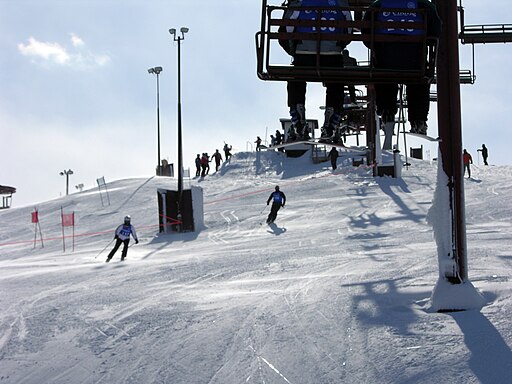November is the deadliest month on the Great Lakes – and it’s not just about the storms
November is the deadliest month for shipwrecks on the Great Lakes. Despite the harsh storms, ships would often have overloaded cargo holds for the final trip of the year, making them more vulnerable as storms arose. Read the full story by MLive.
Great Lakes Commission
https://www.glc.org/dailynews/20241106-november-shipwrecks














 You can’t get what you don’t ask for. In a perfect world, our state’s leaders would make all decisions based on what’s best for the most people, protecting the most vulnerable and prioritizing the health of people and the environment.
You can’t get what you don’t ask for. In a perfect world, our state’s leaders would make all decisions based on what’s best for the most people, protecting the most vulnerable and prioritizing the health of people and the environment. You may have heard about so-called “green mining” or critical minerals in the news. Given our long history of opposing sulfide mining in our region, we are concerned about developments at the state and federal levels that could put our clean water at risk, all under the guise of sustainable energy.
You may have heard about so-called “green mining” or critical minerals in the news. Given our long history of opposing sulfide mining in our region, we are concerned about developments at the state and federal levels that could put our clean water at risk, all under the guise of sustainable energy. River Alliance is working with tribal and local partners to launch the Manoomin Stewards Project to support data collection and cultural training for volunteers. Stay tuned for more on how we will support Indigenous communities’ efforts to protect this vulnerable and ancient species, which relies on clean water.
River Alliance is working with tribal and local partners to launch the Manoomin Stewards Project to support data collection and cultural training for volunteers. Stay tuned for more on how we will support Indigenous communities’ efforts to protect this vulnerable and ancient species, which relies on clean water. Solving Wisconsin’s agricultural water contamination problem requires systemic, transformational change across our entire food system.
Solving Wisconsin’s agricultural water contamination problem requires systemic, transformational change across our entire food system. Making conservation the default approach for farmers will depend on larger systemic changes—beyond the farm gate or even the watershed. Changes to how lenders reward conservation practices in farm loans, what big purchasers expect, and what federal insurance policy signals to farmers all play a role. Creating entry points for a younger and more diverse population of farmers would slow farm consolidation, increase crop diversity, and foster more farm product businesses.
Making conservation the default approach for farmers will depend on larger systemic changes—beyond the farm gate or even the watershed. Changes to how lenders reward conservation practices in farm loans, what big purchasers expect, and what federal insurance policy signals to farmers all play a role. Creating entry points for a younger and more diverse population of farmers would slow farm consolidation, increase crop diversity, and foster more farm product businesses. Neonicotinoids, commonly called “neonics,” are the most widely used insecticides in Wisconsin, though you’ve probably never heard of them. These highly toxic chemicals are applied to millions of acres of agricultural and urban land each year, leading to unintended consequences for our surface and groundwater. They leach into waterways, persist in soils, and even appear in nectar and pollen of treated crops.
Neonicotinoids, commonly called “neonics,” are the most widely used insecticides in Wisconsin, though you’ve probably never heard of them. These highly toxic chemicals are applied to millions of acres of agricultural and urban land each year, leading to unintended consequences for our surface and groundwater. They leach into waterways, persist in soils, and even appear in nectar and pollen of treated crops. This summer, Rutabaga’s fearless leader, Darren Bush, pulled the winning ticket for our boat raffle. Congratulations to Juli from Green Bay! The avid outdoorswoman received the call the day before her birthday and was excited to show the boat to her canoe-building dad. We can’t wait to see which waters Juli paddles this year.
This summer, Rutabaga’s fearless leader, Darren Bush, pulled the winning ticket for our boat raffle. Congratulations to Juli from Green Bay! The avid outdoorswoman received the call the day before her birthday and was excited to show the boat to her canoe-building dad. We can’t wait to see which waters Juli paddles this year. Evan Arnold joins River Alliance with nine years of fundraising experience at Wisconsin Conservation Voters and the Wisconsin Democracy Campaign. As Development Director, he will lead our efforts to build relationships with members, donors, businesses, and others who support clean water for all.
Evan Arnold joins River Alliance with nine years of fundraising experience at Wisconsin Conservation Voters and the Wisconsin Democracy Campaign. As Development Director, he will lead our efforts to build relationships with members, donors, businesses, and others who support clean water for all.
